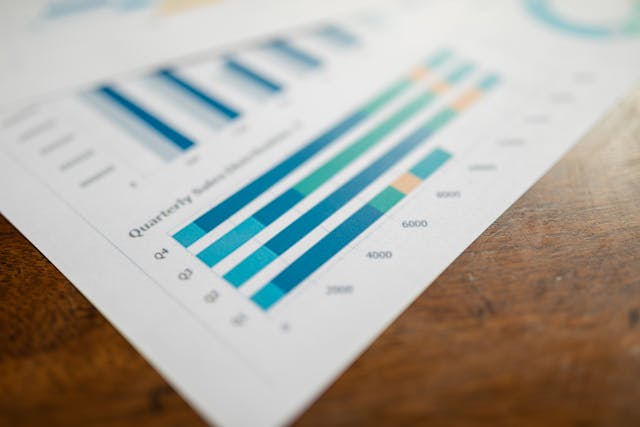Budgeting vs Forecasting: Unlocking Financial Clarity & Control – Businesses and people seeking long-term financial security must engage in effective financial planning. Forecasting and budgeting are two essential elements of financial planning. Despite their frequent interchangeability, these phrases have different meanings. This article explores the distinctions between forecasting and budgeting, as well as their special advantages, complementary roles, and optimal methods for putting them into effect.

Businesses and people may reduce financial risks, maximise resources, and make well-informed decisions with the help of a clearly defined financial plan. Comprehending the importance of forecasting and budgeting is crucial for anybody seeking to enhance their own financial management, be it a financial analyst, entrepreneur, or someone else.
This manual thoroughly examines these financial instruments and explains how to use them to your advantage.
What is the budgeting process?
An entity’s revenue and spending for a given time period, often a year, are outlined in a budget, which is a planned financial plan. It acts as a financial road map, assisting both people and companies in efficiently allocating resources.
One proactive method of managing finances is budgeting. Planning, establishing financial goals, and making sure that spending and anticipated income are in line are all part of it. Businesses and individuals may foresee financial difficulties, cut back on wasteful spending, and allocate cash effectively to reach financial objectives with the help of a well-prepared budget.
Essential Features of Budgeting:
- Timeline: Usually once a year, with evaluations conducted on a monthly, quarterly, or semi-annual basis.
- Goals: Establishes expenditure caps, revenue targets, and financial aims.
- Fixed Structure: Predicated on historical data, anticipated future circumstances, and financial goals.
- Helps in: Expense control, financial discipline, resource allocation, and performance measurement.
Different Budget Types

- Operating Budget: Revenues and costs associated with day-to-day operations are the main focus of the operating budget.
- Capital Budget: Long-term investments like real estate, machinery, and expansion projects are covered by the capital budget.
- Cash Flow Budget: To maintain liquidity, the cash flow budget projects cash inflows and outflows.
- Static Budget: Doesn’t alter based on changes in financial performance.
- Flexible Budget: Modifies according to market circumstances and real business performance.
The advantages of budgeting
- Expense management: Expense management helps keep spending under control and guards against financial mismanagement.
- Resource allocation: Resource allocation makes ensuring that money is distributed effectively.
- Performance measurement: Performance measurement serves as a standard by which to measure financial advancement.
- Financial Stability: Encourages disciplined saving and lessens financial insecurity.
- Improved Decision-Making: Facilitates long-term planning and clarifies financial priorities.
What is forecasting?
Forecasting is the process of making predictions about future financial results using market patterns, historical data, and the state of the economy. Forecasting is more adaptable than budgeting and is revised often to account for shifting conditions.
Businesses and individuals may predict financial trends and make well-informed decisions by using financial forecasting. Forecasting aids in the prediction of revenue growth, costs, investment possibilities, and possible dangers by examining historical and present financial data.
Important Features of Forecasting:

- Timeframe: either long-term (annual/multi-year) or short-term (monthly/quarterly).
- Goal: Forecasts trends in financial performance and becomes ready for any financial hazards.
- Dynamic: Modified in response to current economic conditions and financial data.
- Helps in: Aids in risk assessment, cash flow management, market flexibility, and strategic decision-making.
Forecasting Types:
- Revenue forecasting: Revenue forecasting makes predictions about future earnings using historical sales information and market research.
- Expense forecasting: Assures financial stability by projecting future expenses.
- cash flow forecasting: For the purpose of managing liquidity, cash flow forecasting examines anticipated cash inflows and outflows.
- Sales forecasting: Sales forecasting makes predictions about sales performance based on market circumstances, seasonality, and historical trends.
- Financial Statement Forecasting: Forecasts cash flow, balance, and income statements.
The advantages of forecasting
- Proactive Decision-Making: Making proactive decisions aids companies in foreseeing potential financial obstacles and possibilities.
- Better financial Flow Management: Prevents financial shortages and guarantees better liquidity planning.
- Market adaptability: Enables prompt responses to shifts in the market and economy.
- Improves Strategic Planning: Supports long-term investment and company expansion choices.
- Risk mitigation: Risk mitigation is the process of identifying possible hazards and offering solutions for long-term financial stability.
| Feature | Budgeting | Forecasting |
| Definition | Budget for a certain time frame | Forecasting patterns in financial performance |
| Timeframe | Semi-annual or annual | Long-term, quarterly, or monthly |
| Flexibility | Repaired with recurring evaluations | Constantly updated |
| Purpose | Establishes financial objectives | Forecasts financial results |
| Data Basis | Using estimates and historical performance | Using statistics and trends from real time |
The Significance of Forecasting and Budgeting
Businesses and individuals should incorporate forecasting and budgeting into their financial planning process in order to get the best possible financial clarity and control.
How They Enhance One Another:

- Budgeting establishes financial limits, and forecasting offers guidance on how to stay inside them.
- While predictions allow for flexibility in reaction to changes in the market, budgets guarantee discipline.
- Forecasting keeps financial plans current by assisting in budget revisions based on actual performance.
- Setting financial objectives requires budgeting, and forecasting allows for real-time changes to achieve those goals.
Top Techniques for Efficient Forecasting and Budgeting
- Use Reliable Data: Forecasting and budgeting are enhanced by accurate historical data.
- Use Financial Software: Financial planning is made easier with the use of programs like Excel, Xero, and QuickBooks.
- Review and Update Frequently: Make sure your projections and budget are still applicable by making occasional adjustments.
- Take into Account External Factors: Forecasting and budgeting should be informed by market trends, economic conditions, and industry developments.
- Promote Cooperation: To improve accuracy and goal alignment, include important stakeholders in financial planning.
- Scenario Analysis: To be ready for unforeseen economic events, develop a number of financial scenarios.
- Monitor KPIs: Track key performance indicators (KPIs) to evaluate financial health and modify plans as necessary.
Conclusion
When combined, forecasting and budgeting are two crucial financial tools that offer a thorough method of managing finances. Forecasting provides dynamic insights that assist make smarter decisions, while budgeting aids in establishing financial boundaries.
Businesses and people may get more financial clarity and control by utilising forecasting and budgeting, which will guarantee stability and success in the long run. These resources offer a path to reaching financial objectives while preserving the adaptability to deal with unanticipated circumstances.
To improve financial stability, maximise resource allocation, and promote sustainable growth, begin putting sound forecasting and budgeting techniques into practice right now.
Emergency Budget Planning for Indian Families: A Complete Guide
Tips for Reducing Monthly Utility Bills in India
Budgeting for irregular income: A Practical Guide
How to Achieve Financial Freedom Through Budgeting in India


Very obliging